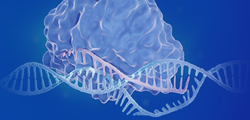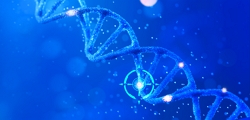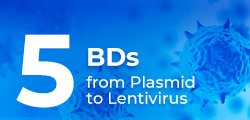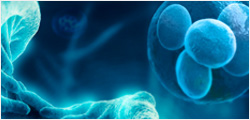-
REAGENT SERVICES
Hot!
-
Most Popular Services
-
Molecular Biology
-
Recombinant Antibody/Protein
-
Reagent Antibody
-
CRISPR Gene Editing
-
DNA Mutant Library
-
IVT RNA and LNP Formulations
-
Oligo Synthesis
-
Peptides
-
Cell Engineering
-
- CRISPR/Cas9 sgRNA
- CRISPR/Cas12a crRNA
- Prime Editing Guide RNA
- Base Editing Guide RNA
- HDR Templates
- gRNA + HDR Template Design Tools
- cGMP Guide RNA
- cGMP HDR Templates
- CRISPR/Cas Proteins
- CAR-T Knock-in Optimization Kit
- CRISPR Plasmids
- CRISPR gRNA Plasmid Libraries
- CRISPR Cell Lines
- Microbial Genome Editing
-
-
PRODUCTS
-
Most Popular Reagents
-
 Instruments
Instruments
-
Antibodies
-
ELISA Kits
-
Protein Electrophoresis and Blotting
-
Protein and Antibody Purification
-
Recombinant Proteins
-
Molecular Biology
-
Stable Cell Lines
-
Cell Isolation and Activation
-
 IVD Raw Materials
IVD Raw Materials
-
 Therapy Applications
Therapy Applications
-
Resources
-
- Pharmacokinetics and Immunogenecity ELISA Kits
- Viral Titration QC ELISA Kits
- -- Lentivirus Titer p24 ELISA KitHot!
- -- MuLV Titer p30 ELISA KitNew!
- -- AAV2 and AAVX Titer Capsid ELISA Kits
- Impurity Test ELISA Kits
- -- BSA ELISA Kit, 2G
- -- Cas9 ELISA KitNew!
- -- Protein A ELISA KitNew!
- -- His tagged protein detection & purification
- -- dsRNA ELISA Kit
- -- Endonuclease ELISA Kit
- COVID-19 Detection cPass™ Technology Kits
-
- Automated Maxi-Plasmid PurificationHot!
- Automated Mini-Plasmid PurificationNew!
- PCR Reagents
- S.marcescens Nuclease Benz-Neburase™
- DNA Assembly GenBuilder™
- Cas9 / Cas12a / Cas13a Nucleases
- Base and Prime Editing Nucleases
- GMP Cas9 Nucleases
- CRISPR sgRNA Synthesis
- HDR Knock-in Template
- CRISPR Gene Editing Kits and Antibodies
-
![AmMag™ Quatro Automated Plasmid Purification]() AmMag™ Quatro automated plasmid purification
AmMag™ Quatro automated plasmid purification
-
![Anti-Camelid VHH]() MonoRab™ Anti-VHH Antibodies
MonoRab™ Anti-VHH Antibodies
-
![ELISA Kits]() ELISA Kits
ELISA Kits
-
![Precast Gels]() SurePAGE™ Precast Gels
SurePAGE™ Precast Gels
-
![Quatro ProAb Automated Protein and Antibody Purification System]() AmMag™ Quatro ProAb Automated Protein and Antibody Purification System
AmMag™ Quatro ProAb Automated Protein and Antibody Purification System
-
![Target Proteins]() Target Proteins
Target Proteins
-
![AmMag™ Quatro Automated Plasmid Purification]() AmMag™ Quatro automated plasmid purification
AmMag™ Quatro automated plasmid purification
-
![Stable Cell Lines]() Stable Cell Lines
Stable Cell Lines
-
![Cell Isolation and Activation]() Cell Isolation and Activation
Cell Isolation and Activation
-
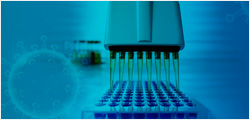 IVD Raw Materials
IVD Raw Materials
-
![Quick
Order]() Quick Order
Quick Order
-
![Quick
Order]() Quick Order
Quick Order
- APPLICATIONS
- RESOURCES
- ABOUT US
- SIGN IN My Account SIGN OUT
- REGISTER

![Amino Acid Code Amino Acid Code]()
a Related Biological Terms
This Biology terms dictionary provides query services for biology and biochemistry terms. Please enter the biology or biochemistry terms you want to search.
List by Alphabet: A B C D E F G H I J K L M N O P Q R S T U V W X Y Z
a Related Biological Terms:
A scavenger of reactive oxygen free radical species (OH•, O2-•, etc.) and other oxidizing compounds; of particular importance are those that act as antioxidants in vivo, e.g. ascorbate, a-tocopherol, reduced glutathione. (see also oxidative stress)
In protein chemistry, the orientation of extended polypeptide chains that interact in a pleated sheet structure, one chain in an N- to C-terminal direction and the other in a C- to N-terminal direction; in nucleic acid chemistry, the orientation of the two polynucleotide chains of a double helix, one that runs in a 3' to 5' direction and the other in a 5' to 3' direction.
A transport mechanism that simultaneously drives two different compounds or ions in opposite directions across a membrane. (see also mobile barrier; mobile carrier; symport; uniport)
Descriptive of an endogenous or semi-synthetically produced oligoribonucleotide complementary to mRNA and capable of base-pairing and annealing with mRNA to prevent translation; or of an oligodeoxyribonucleotide capable of binding to the major groove of polypurine-polypyrimidine sequences of DNA by Hoogsteen base pairing to silence a gene. Also used to describe one of the two strands of double-stranded DNA, usually that which has the same sequence as the mRNA, i.e. the non-transcribed strand. However, there is not universal agreement on this convention, and a preferred designation is coding strand for the strand whose sequence matches that of the mRNA, and non-coding strand for the complementary strand (i.e. the transcription template, or transcribed strand). De Mesmaeker, A., Haner, R., Martin, P. and Moser, H.E. (1995) Acc. Chem. Res. 28, 366-374; Hengen, P.N. (1996) Trends Biochem. Sci. 21, 153-154; Cornish-Bowden, A. (1996) Trends Biochem. Sci. 21, 155 Related tool: reverse complement
(= code blocker (antisense drug))
Descriptive of the free border of an epithelial cell, where it is in contact with vascular space. (see also basolateral)
Descriptive of a class of protozoan parasites that pass part of their life cycles in mammalian cells, e.g. the malaria pathogen Plasmodium falciparum, and which contain in their apices organelles that assist penetration of host cells. Also characteristic are the apicoplast, an organelle which contains maternally-inherited circular DNA, possibly of green algal evolutionary origin, and enzymes of the C6C3 metabolic pathway.Ridley, R.G. (1998) Nat. Med. 4, 894-895
(see apicomplexan)
Descriptive of a secretion mechanism in which vesicles that contain the product burst through the cell membrane and are released along with some of the cytoplasm and plasma membrane. (see also exocytosis; holocrine)
The surface of a protein that is internalized in native proteins and that becomes available for interaction with water during denaturation.
-
Top Search
-
Hot Glossary
-
Antibody
If you know of any terms that have been omitted from this glossary that you feel would be useful to include, please send detail to the Editorial Office at GenScript: website@genscript.com
If your term is adopted, we will send 1,000 EzCoupon points to your GenScript account.
-



